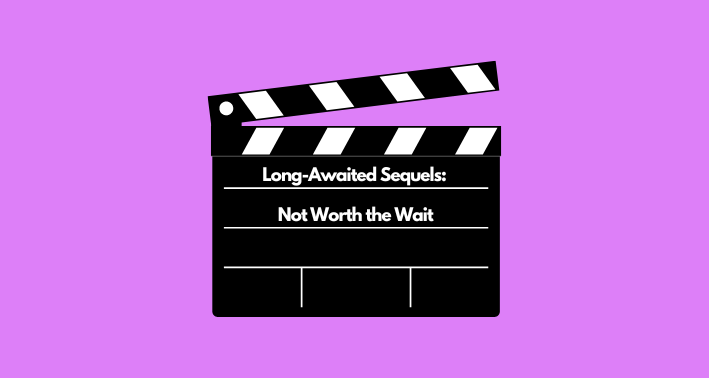Long-awaited sequels threaten the quality of films
Photo provided by: Julia Hubbell
Films in the same series are typically released within a few years of each other. However, the trend of waiting longer between film releases is becoming popular. This tends to leave the audience with a subpar second installment, using the anticipation as a quick cash grab instead of trying to produce a high quality film.
January 24, 2023
Sequels are a staple in the film industry. Building off the backs of the original work in hopes of expanding a cinematic universe. And while sequel installments are typically highly anticipated by the audience, they are not always high quality. The time that elapses within the release of the first and second installment in a series can make or break the quality of the film itself. Sequels released a long time after the first movie tend to fall flat, despite high hopes from fans of the franchise.
The first issue with this brand of sequels is that they largely rely on the opinions of the first movie to publicize the second one. The things that people generally liked about the first movie become overused and abused techniques in the sequel. It makes the overall watching experience feel redundant and boring. However, these films continue to perform well in the box office due to the long-term anticipation, providing inaccurate feedback for a film that audiences did not favor. As an avid movie lover, it is frustrating to see this occur because it encourages filmmakers to pursue greed-based films that audiences will not enjoy, in hopes of making a quick cash grab. These sequels typically come out with enough time in between where the original cast has blown up in popularity. This furthers the idea that directors are using the popularity of the stars to rope in an audience without showcasing their talents.
A prime example of this is the Star Wars sequel series. With “Star Wars: Revenge of the Sith” premiering in 2005, fans were very excited for the release of “Star Wars: The Force Awakens” in 2015. But as filmmakers focused on overloading the film with nostalgia for older audiences, the film lost its plot and reeked with the untapped potential of so many of the characters that had been introduced in the film. And while there were some enjoyable aspects of seeing the familiar faces of Carrie Fisher and Harrison Ford, the movie (and subsequent rest of the trilogy) relied too heavily on the original films, and failed to create something unique for the Star Wars universe to expand into. Another example is the release of “Avatar: The Way of Water” in Dec. 2022, considering the original “Avatar” movie premiered in 2009. The techniques used in the original film were very advanced considering the technology available for filmmaking at the time, which played into the success of the first installment a great deal. With this and the 13 year gap in mind, I headed to the theater expecting to be amazed at cutting edge work, just like fans were in 2009. However, leaving the theater, I found myself bored by the repetitive nature between the two films. The plots were relatively the same and the CGI and creative elements were nothing praiseworthy.
With many more examples of failures in mind, I find it important to note that some film series have overcome the gaps in creation of the first movie and those that follow suit. The “Before” trilogy follows a couple meeting, falling in love, and living their lives together. “Before Sunrise” came out in 1995, with “Before Sunset” continuing the story in 2004, and “Before Midnight” finishing the series in 2013. While the idea of long gaps between films can be dangerous for many, this trilogy perfectly exemplifies how to appropriately handle the gap, and use it as a device in the storytelling itself. Director Richard Linklater uses the nine years between each installment to show different periods in the couple’s lives. As the leads, Ethan Hawke and Julie Delpy, aged throughout the decades, they were able to portray issues that challenged their characters later in life. This gives each film a unique lesson and theme, keeping it out of redundancy.
Despite the “Before” series escaping the pitfalls of large gaps between films, most directors, series’ and franchises do not. The most prominent issue with long awaited sequels is that they are not of a quality that reasonably justifies the gap between their releases.






